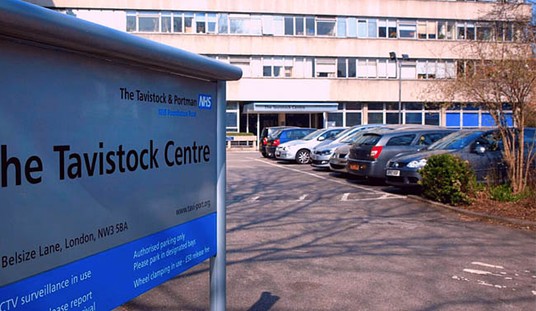Something rather strange to start your weekend off, found when I was browsing the work of my friend Phineas (better known as Irishspy on Twitter) , writing at Sister Toldjah. I know that the early days of any emerging technology can produce the occasional snafu, but did we really almost blow up North Carolina in a nuclear furnace which would have put Hiroshima to shame?
Well, this is reassuring: In 1961, a nuclear-armed B-52 breaks up over Goldsboro, North Carolina, and in the process releases two 4-megaton H-bombs, one of which nearly detonated:
The Guardian has a report claiming that it’s true.
A secret document, published in declassified form for the first time by the Guardian today, reveals that the US Air Force came dramatically close to detonating an atom bomb over North Carolina that would have been 260 times more powerful than the device that devastated Hiroshima.
The document, obtained by the investigative journalist Eric Schlosser under the Freedom of Information Act, gives the first conclusive evidence that the US was narrowly spared a disaster of monumental proportions when two Mark 39 hydrogen bombs were accidentally dropped over Goldsboro, North Carolina on 23 January 1961. The bombs fell to earth after a B-52 bomber broke up in mid-air, and one of the devices behaved precisely as a nuclear weapon was designed to behave in warfare: its parachute opened, its trigger mechanisms engaged, and only one low-voltage switch prevented untold carnage.
Well, that’s rather disturbing to say the least. But I’ve been laboring under the perception for some time now that these devices have so many fail-safe features that they’re actually less likely to go off when you want them to than to accidentally unleash the forces of hell. What happened?
Jones found that of the four safety mechanisms in the Faro bomb, designed to prevent unintended detonation, three failed to operate properly. When the bomb hit the ground, a firing signal was sent to the nuclear core of the device, and it was only that final, highly vulnerable switch that averted calamity. “The MK 39 Mod 2 bomb did not possess adequate safety for the airborne alert role in the B-52,” Jones concludes.
The document was uncovered by Schlosser as part of his research into his new book on the nuclear arms race, Command and Control. Using freedom of information, he discovered that at least 700 “significant” accidents and incidents involving 1,250 nuclear weapons were recorded between 1950 and 1968 alone.
Parts of this sound like the premise that kicks off the classic movie War Games. (Which I’ll still sit through with a Bloody Mary when it turns up on TBS on a Saturday morning.) It’s a delicate balance between bombs which might lean toward going off on their own and ones which rely too heavily on squeamish humans to turn a key and fire them. But then, we’re talking about 1961 here. The H-bomb was still in development, at least in the command and control systems.
But it does lead to an interesting exit question for the weekend discussions. How might history have unfolded differently if a nuke more than 200 times the power of what we dropped on Japan had blown up in North Carolina? We weren’t in the middle of any major military engagement at the time (yet… we were in Vietnam, but it didn’t really ramp up to a full blown, army sized engagement for a few more years) but we were on a building spree. How would the media have reported it? How would the nation have reacted? Would we have curled up into a Japan-like shell and eschewed all nuclear endeavors from then on, surrendering the eventual field of play to the Soviet Union? Or would we have just “toughed it out” and moved on?
Things that make you go hmmmm.








Join the conversation as a VIP Member